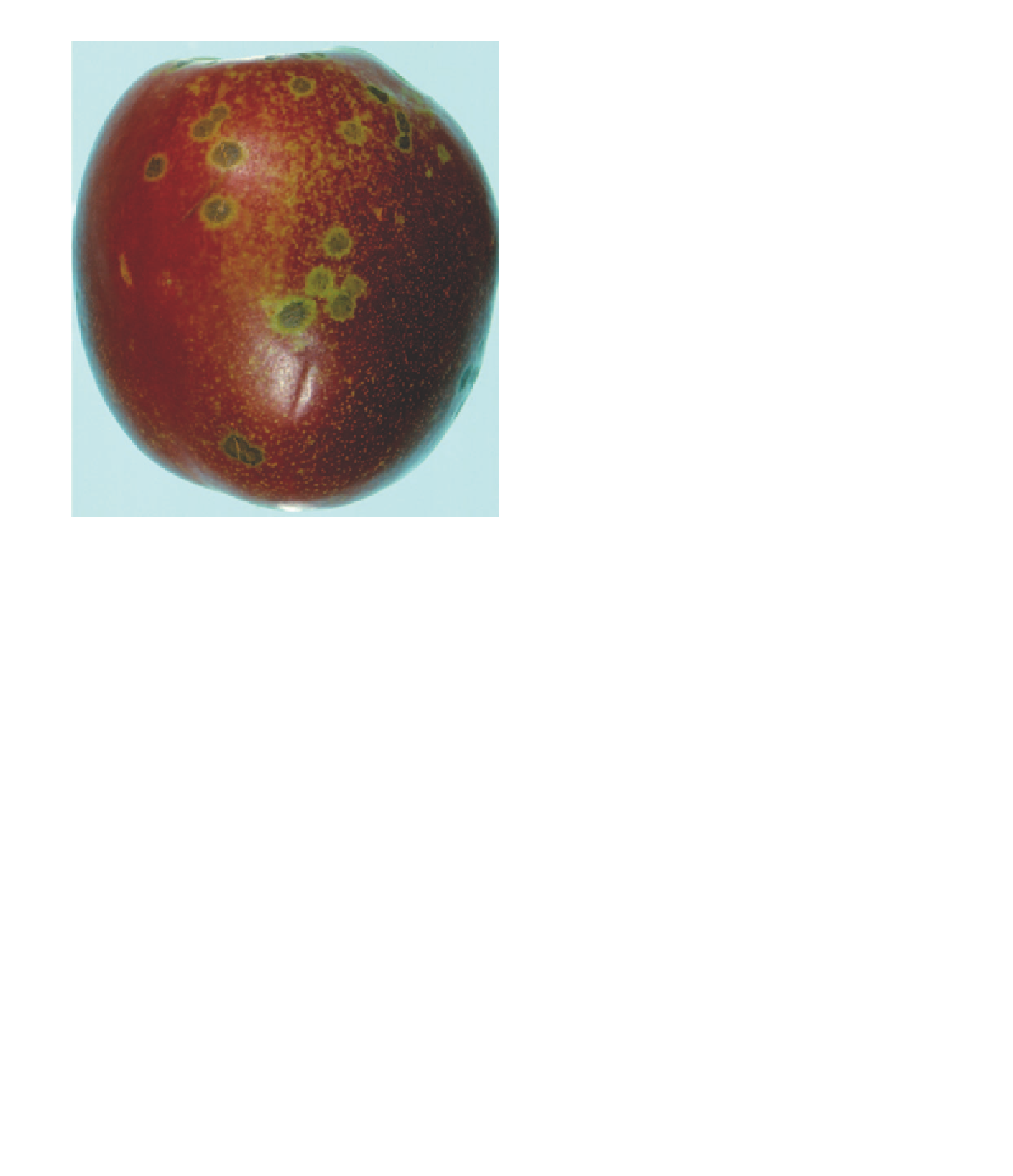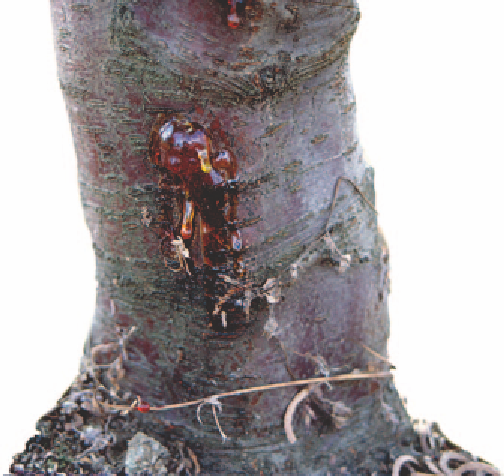Agriculture Reference
In-Depth Information
Fig 17.19 Gummosis symptoms in a trunk.
'gummosis' in different ways. Importantly, the symptoms
caused by each of these problems require a different
method of management. This section refers to gummosis
caused by a fungal pathogen.
Fig 17.18 Freckle on a nectarine.
in splashing rain to leaves and fruit. Symptoms may not
appear for up to two months after infection. Warm, moist
weather favours the disease.
Cause
The fungus
Botryosphaeria dothidea
.
Importance
Freckle is a minor disease in well-managed orchards, but
can be serious in areas with warm, humid summers (i.e.
New South Wales). Freckle can substantially reduce fruit
quality if not controlled adequately. In general, late-
maturing cultivars are affected more commonly than early
cultivars.
Symptoms
Lower scaffold branches and trunk: lesions, centred on
swollen lenticels, weep clear, sometimes sticky, ooze. This
ooze does not usually have a strong odour, unlike that
caused by Phytophthora (sickly sweet smell) and bacterial
canker (sour smell). Tissue death occurs in the area
immediately below infection, and severely infected trees
develop very rough-looking bark on the lower trunk and
lowest scaffold branches.
Management
•
Spray with the recommended protectant fungicides.
In general, sprays applied for rust and fungal shot-hole
should also manage this disease.
Source of infection and spread
Little is known about the disease cycle or conditions
favouring spread.
Prune twig lesions over winter, and remove infected fruit
from the orchard throughout the season. Dispose of
infected plant parts well away from the orchard.
•
Importance
This pathogen can be serious disease of stone fruit trees in
the Riverlands, Perth Hills, south-east Queensland, northern
New South Wales and the Adelaide Hills. If trees are kept
healthy and the infection is not severe, they can remain
productive. Overseas research has shown this disease to
reduce production by 40% in severely affected trees.
FUNGAL GUMMOSIS
Gummosis in stone fruit trees is caused by several factors
including mechanical damage, physiological stress and
disease (Armillaria, fungal gummosis, brown rot and
Phytophthora). Different regions in Australia use the term
■












